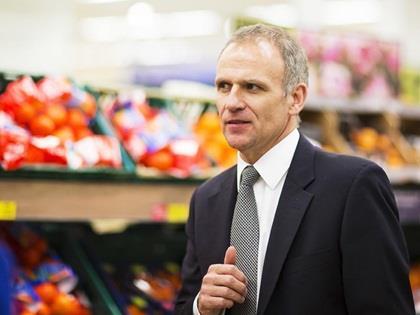
Tesco boss Dave Lewis today hailed its first-half results for 2016/7 as proof that the retailer was “out of crisis” and heading back to a world of shareholder profits. Here are the big six questions raised by today’s announcements.
1. What’s been driving the success, moving the business from “crisis” to recovery?
Tesco has notched up three consecutive quarters of like-for-like sales growth, the value of UK food sales has grown for the first time since 2013 in the second quarter, and it has outperformed the market on volume growth in all food categories. All the noises coming out of Tesco today suggest that CEO Dave Lewis is successfully turning the juggernaut around.
And despite the controversy surrounding the ‘fake’ Farms brands launched earlier this year, the initiative has not only worked – it is a fundamental driver in winning back shoppers from competitors and getting more consumers into stores.
The seven fresh food brands contributed to a 2.1% boost in volumes in the half and resulted in 80% of customers making repeat purchases of these products. The Farms brands have also pushed meat and produce prices down in the category by 7% and 4% respectively, Lewis added.
“We have 80% repeat rate because we are winning on quality and price,” he said. “On those brands in those categories we have been the cheapest across the marketplace and we have a quality which is market-beating against the competitive set.”
Speaking of price, Tesco has invested in simplifying its offer, with less cluttered labels on shelf, the Brand Guarantee and a return to a three-tier system for own label. Tesco prices are now more than 6% lower than September 2014 on a typical customer basket, while the number of products on multibuy promotions has been slashed by 27% year on year.
Lewis also highlights the painstaking work done on the massive range resets to improve the customer experience. Two years ago a ‘customer spotlight’ survey of the industry had Tesco failing its shoppers and finishing last in the industry for availability. “If there was only one element I would emphasise in what we have been doing for two years it would be improvement in range and availability,” Lewis says. “But as we have gone through range resets and availability drives we have got ourselves to being joint top in the marketplace. That is why we are getting so much repeat purchase and engagement with customers.”
2. What is the impact on shareholders and when will they see a return of a dividend?
Tesco has long been under attack from hedge funds and the like looking to make money from the financial and managerial woes of past regimes. It is one of the most shorted stocks on the FTSE 100 and the share price slumped to lows of 143p at the tail end of 2015.
But today long-suffering shareholders had reasons to be cheerful as the stock rocketed more than 10% to 208p (almost 40% up for the year) after Lewis confidently announced Tesco was no longer in “crisis” alongside a plan to improve profit margins to 3.5% to 4% within the next three years.
However, that won’t be so straightforward in a market as challenging as the UK – with Asda still yet to go big on price. And CFO Alan Stewart warned that dividends – which haven’t been paid since December 2014 – won’t be making a return any time soon. He says the business needs to improve its credit rating position (Moody’s downgraded its debt to ‘junk’ status in 2015) and the continued recovery in stores is the priority. “As and when we restore a dividend we want to be clear that is sustainable and we set up a policy that our shareholders understand and which supports the continued strength of the business,” he added. “Today is too early but we are in a better position as we move forward to do that.”
3. Are Tesco’s big sheds back in business?
Lewis has said before that reports of the death of the hypermarket have been exaggerated but at last the figures show Tesco’s Extra formats in like-for-like sales growth, albeit at only 0.1%.
Lewis claims customers are “returning to the Extras” thanks to Tesco’s investment in its core proposition. Tesco superstores also returned to growth, with 1% like-for-like increases in the quarter, having been flat since the end of 2015.
Lewis said today: “We have now had three-quarters of ever so slightly positive growth in the larger stores. I have never really truly believed that people were shopping more locations because they really wanted to. In my conversations with customers two years ago, they did it because they felt like they had to. And actually when you are time-starved and you can go to one place and get the range, service and availability of our big stores it is actually the most convenient for most people.”
However, it looks far too soon to suggest Tesco’s big sheds are no longer under threat, having already borne the brunt of reductions in 24-hour opening and night replenishment cuts.
4. Will there be a fresh round of redundancies to pay for increasing profits?
To pay for its increased profit margins, Lewis revealed plans for a sweeping £1.5bn programme to reduce operating costs. This is expected to include further changes to store operations following the recent changes to opening hours and staffing at Tesco’s larger stores.
Last month, Tesco began redundancy talks with thousands of workers at nearly 150 stores as it launches a nationwide rollout of night shift closures. However, Lewis stressed today that the £1.5bn saving was not going to be solely focused on cutting staff.
“Since I started we’ve brought in 12,000 more colleagues,” he said, adding that Tesco had identified ways to save money in its distribution centres, logistics operations and in its procurement of goods.
“This is not about head count reduction. There is always some trimming but in the scheme of things that is contributing to the savings; it is about changing the way we do business. The £1.5bn is not about head count and restructuring. It is not. I could not be clearer. There are some modifications to operating models but we offer every colleague who might be affected another role in the organisation as we change. “
Lewis said Tesco had identified £500m of procurement savings. “Tesco has a massive buying ledger for everything from notepads to toilet paper to cleaning services and everything it takes to run our business. More than 9,000 suppliers and we have never bought it centrally. £500m of the £1.5bn will come from Tesco buying what Tesco needs better than we were buying it before.”
5. Has Tesco fallen out of love with online?
Once again, today’s results were a sign of the much lower key of online operation under Dave Lewis than his predecessor Philip Clarke, with barely a mention in the documents. When it did get a mention, Tesco actually claimed that it had deliberately slowed online sales in a bid to make its operations more sustainable. “The rate of online grocery sales growth moderated, as planned, due to changes we have made to improve the sustainability of our offer,” it said.
6. And what about the impact of Brexit?
Ratings agency Moody’s published a report today examining the outlook for the European retail industry in which it concluded the impact of the Brexit vote on UK food retailers would be more “muted” in the short term. Lewis seemed to agree. “To be honest there has been much more volatility in our sales because of the weather than Brexit,” he said. “We have seen nothing we could attribute at all to change consumer habits or spending related to Brexit.”
And he added that with between 30% and 40% of group profits coming from the international business there was a natural hedge to deal with exchange rate movements that rivals didn’t have.








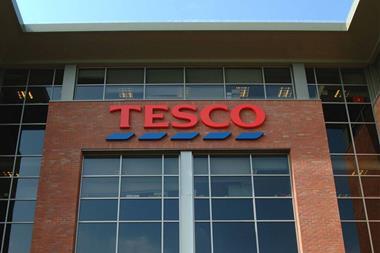
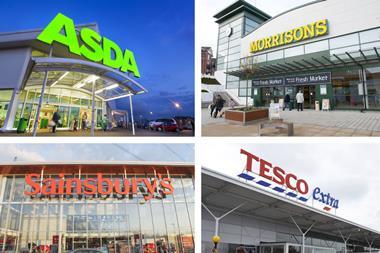

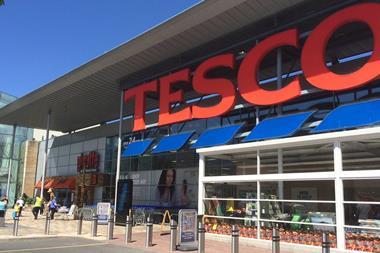
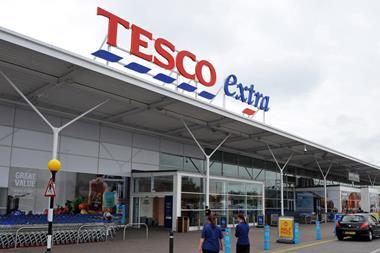






No comments yet